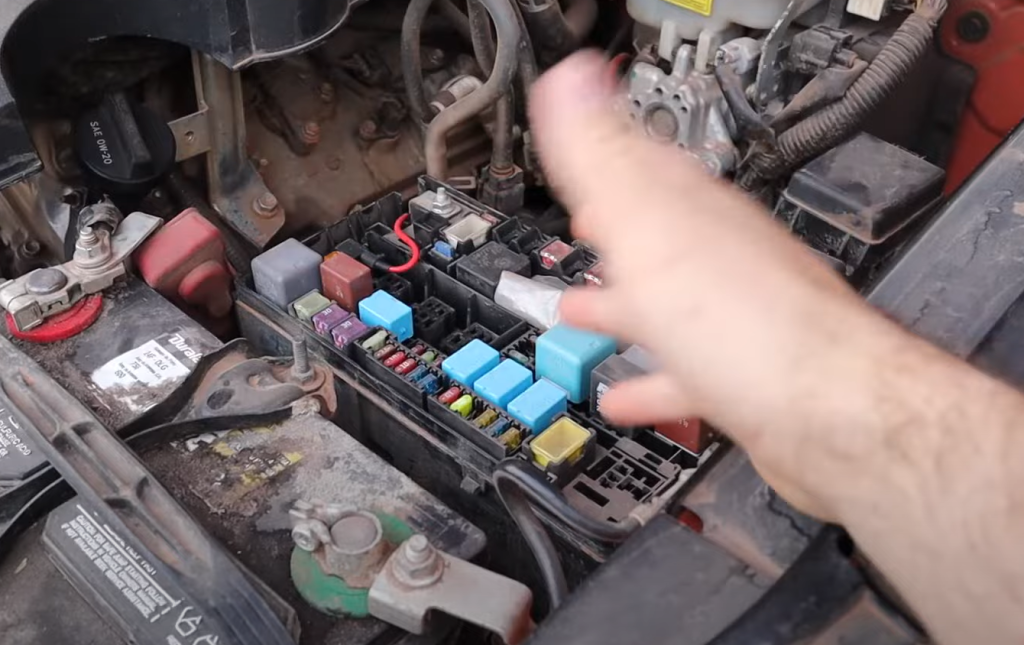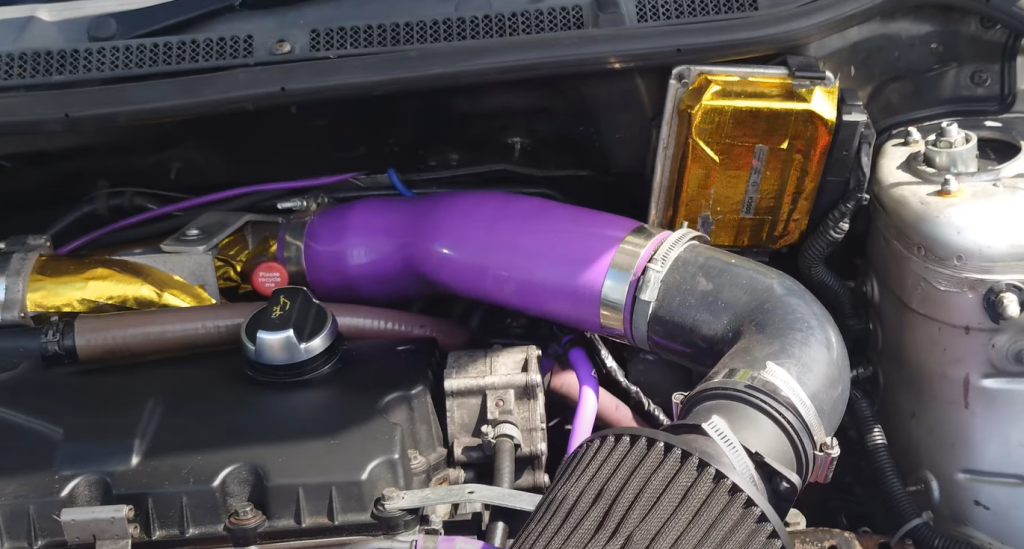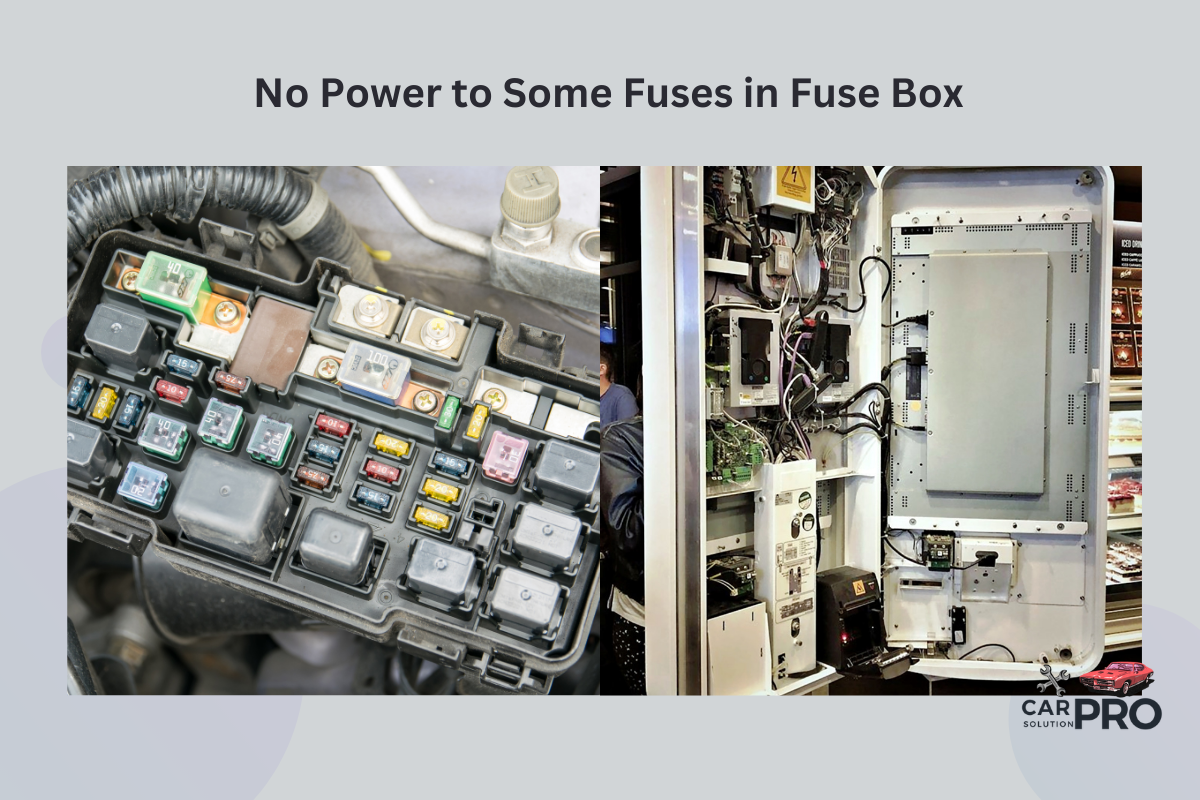When your car’s fuse box lacks power to some fuses, it can be a frustrating problem. This issue often leads to various electrical components not working properly. The main causes of no power to some fuses include a faulty starter relay, blown fuses, or issues with the electrical control module.
Fixing this problem may involve checking and replacing fuses, inspecting relays, or seeking professional help for more complex electrical issues. It’s important to address the root cause to prevent future problems and ensure all electrical systems in your vehicle function correctly.
Regular maintenance and prompt attention to electrical issues can help avoid more serious problems down the road. By understanding the basics of your car’s fuse box and electrical system, you can better diagnose and address power issues when they arise.
Key Takeaways
- A lack of power to some fuses can be caused by faulty relays, blown fuses, or ECM problems
- Regular checks of the fuse box and electrical system can prevent major issues
- Professional diagnosis may be needed for complex electrical problems in vehicles
Understanding Fuse Box Basics
Fuse boxes are essential safety devices in electrical systems. They protect homes and vehicles from electrical overloads and short circuits. Let’s look at the key parts of a fuse box and how fuses work.
Components of a Fuse Box
A typical fuse box contains several important parts:
- Main switch: This cuts off all power to the fuse box.
- Fuses: These are the protective devices that melt when too much current flows.
- Bus bars: Metal strips that distribute electricity to different circuits.
- Fuse holders: Slots where fuses are inserted.
Some fuse boxes may have labels showing which fuse controls each circuit. This helps with troubleshooting electrical issues.
Modern homes often use circuit breaker panels instead of fuse boxes. These work similarly but use switches instead of fuses.
Function of Fuses

Fuses are simple but effective safety devices. They protect electrical systems in two main ways:
- Overload protection: If too much current flows through a circuit, the fuse melts and breaks the connection.
- Short circuit protection: A sudden surge of current causes the fuse to blow instantly.
When a fuse blows, it must be replaced. This is different from circuit breakers, which can be reset.
Fuses come in different sizes and ratings. It’s crucial to use the correct type for each circuit. Using the wrong fuse can be dangerous.
Frequent blown fuses may point to bigger electrical problems. This could mean a circuit is overloaded or there’s a wiring issue.
Diagnosing Power Issues
When some fuses in your fuse box lack power, it’s crucial to pinpoint the root cause. A systematic approach and the right tools can help identify and resolve the issue quickly.
Initial Assessment
Start by checking if the problem affects multiple fuses or just one. Inspect the fuse box for any visible damage or signs of overheating. Look for burnt marks, melted plastic, or unusual odors.
Next, verify if the main power supply is functioning correctly. Check if other electrical devices in the home are working properly.
Examine the fuses themselves. Look for any that appear blown or damaged. Sometimes, a faulty fuse can cause power loss to multiple circuits.
Tools for Diagnosis
A multimeter is essential for testing voltage and continuity. It can help determine if power is reaching the fuse box and individual fuses.
Use a non-contact voltage tester to quickly check for live wires without direct contact. This tool is safer for initial assessments.
A circuit breaker finder can help locate which breaker controls specific fuses or outlets. This is useful when tracing power flow issues.
Insulated screwdrivers and pliers are necessary for safely removing fuses and accessing wiring connections. Always ensure these tools are rated for electrical work.
Common Causes of Power Loss

Power loss to fuses can stem from several issues within the electrical system. These problems can range from simple fixes to more complex wiring concerns. Let’s explore the main culprits behind this frustrating issue.
Blown Fuses
Blown fuses are a common reason for power loss in specific areas. Fuses act as safety devices, melting when too much current flows through them. This protects the circuit from damage.
Signs of a blown fuse include:
- No power to certain outlets or appliances
- Visible damage or discoloration on the fuse
- A broken metal strip inside the fuse
To fix a blown fuse, first identify the cause of the overload. This could be a faulty appliance or too many devices on one circuit. Replace the blown fuse with a new one of the same amperage rating. Never use a higher-rated fuse, as this can be dangerous.
Regular fuse checks can prevent future issues. If fuses blow often, it may signal a bigger problem that needs professional attention.
Faulty Wiring
Faulty wiring can cause intermittent power loss to fuses. This issue is more serious and often requires expert help.
Common signs of faulty wiring include:
- Flickering lights
- Burning smells near outlets
- Warm or discolored wall plates
- Buzzing sounds from outlets
Old homes are more prone to wiring problems. Outdated wiring may not handle modern power demands. This can lead to overheating and power loss.
Sometimes, rodents or pests can damage wires, causing shorts. In other cases, loose connections in the fuse box itself can interrupt power flow. These issues can create fire hazards and should be addressed quickly.
Corroded Terminals
Corrosion on fuse box terminals can prevent proper electrical flow. This often happens in damp environments or older homes.
Signs of corroded terminals:
- Green or white buildup on metal parts
- Rust on fuse clips or holders
- Intermittent power to certain circuits
Corrosion acts as a barrier, blocking the flow of electricity. This can cause fuses to become loose or fail to make proper contact.
To fix this, turn off the main power. Clean the terminals with a wire brush and electrical contact cleaner. For severe corrosion, replace the affected parts.
Prevent future corrosion by keeping the fuse box area dry. Consider using dielectric grease on connections to repel moisture.
Restoring Power to Fuses
When some fuses in your fuse box lack power, there are two main ways to fix the problem. You can replace blown fuses or repair faulty wiring. Both methods require care and attention to safety.
Replacing Fuses
To restore power, start by checking for blown fuses. Turn off the main power before opening the fuse box. Look for fuses with broken metal strips or dark, cloudy glass. These are signs of a blown fuse.
Remove the old fuse using fuse pullers or needle-nose pliers. Insert a new fuse of the same amperage rating. Never use a higher-rated fuse, as this can cause overheating.
After replacing fuses, turn the power back on. If the new fuse blows immediately, there may be a bigger electrical issue. In this case, call a professional electrician.
Repairing Wiring
Sometimes, damaged wiring can cause fuses to lose power. First, inspect visible wires for signs of wear, fraying, or heat damage. Look for loose connections at the fuse terminals.
Tighten any loose wire connections. If wires are damaged, they need replacement. This often requires opening walls or accessing hard-to-reach areas. Unless you have electrical experience, it’s best to hire a licensed electrician for wire repairs.
Remember, faulty wiring can be dangerous. If you smell burning or see sparks, turn off the main power immediately and call for professional help.
Preventative Measures
Taking steps to prevent fuse box issues can save you time and hassle. Regular upkeep and upgrades are key to keeping your electrical system running smoothly.
Regular Maintenance
Check your fuse box every few months. Look for signs of wear, corrosion, or damage. Clean the box gently with a dry cloth to remove dust and debris.
Test fuses with a multimeter to ensure they’re working properly. Replace any blown fuses right away. Don’t use fuses with higher amperage ratings than recommended.
Keep the area around your fuse box clear. This helps prevent overheating and makes it easier to access when needed.
Label your fuses clearly. This makes troubleshooting faster if issues arise.
Upgrading Fuse Box
Consider upgrading an old fuse box to a modern circuit breaker panel. This can improve safety and handle higher electrical loads.
Have a licensed electrician inspect your system. They can recommend upgrades based on your home’s needs.
Install a whole-house surge protector. This helps protect your appliances and electronics from power surges.
Upgrade wiring if needed. Old or damaged wiring can cause fuse problems and pose safety risks.
Add more circuits if you frequently blow fuses. This helps distribute the electrical load more evenly.
Frequently Asked Questions
Fuse box issues can be tricky to diagnose. Power problems often stem from damaged components, wiring issues, or faulty connections. Understanding common causes helps troubleshoot electrical problems effectively.
Why would a fuse box have power to only half of the fuses?
This can happen due to a damaged fuse block. Partial power loss may result from internal electrical issues or accidental damage to the fuse box.
A faulty main power relay can also cause this problem. When the relay fails, it may not distribute power to all fuses properly.
How can you identify a faulty fuse in a car’s fuse box when there are no signs of it being blown?
Use a multimeter to test for continuity across the fuse. A working fuse should show little to no resistance.
Check for voltage at both ends of the fuse. If there’s voltage on one side but not the other, the fuse might be faulty despite looking intact.
What steps should be taken when there’s no power to the fuse box under the hood?
First, check the main fuse or fusible link. These protect the entire fuse box and can cut power if blown.
Inspect the battery connections. Loose or corroded terminals can prevent power from reaching the fuse box.
Test the 80 amp fuse if present. This fuse often supplies power to other fuses and relays.
What are common reasons for power loss to certain fuses in a vehicle’s fuse box?
Wiring issues like shorts or loose connections can cause power loss. Damaged fuse boxes may also lead to inconsistent power distribution.
A faulty engine control module (ECM) can fail to send signals to certain fuses. This can result in power loss to specific circuits.
How can a fuse in a breaker box fail to provide power despite not being tripped?
Corrosion on the fuse contacts can prevent proper electrical flow. This can happen even if the fuse itself isn’t visibly damaged.
Loose connections between the fuse and its holder can also cause this issue. The fuse may appear intact, but power won’t flow through it properly.
Can a car fuse appear to be good but still not allow power through, and what can cause this?
Yes, a fuse can look fine but fail to conduct electricity. This can happen due to internal damage not visible from the outside.
High resistance within the fuse can also cause this problem. The fuse might not blow, but it restricts current flow enough to prevent proper operation.


